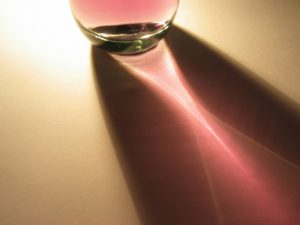 Iron is an essential mineral that we require for optimal health and fitness. But, the presence of iron in water supplies can be cause for concern. Iron is one of the most abundant minerals in the world; the crust of our planet is around 5% iron! When rainwater falls and soaks through the earth and underground formations, it dissolves iron and adds it to the water makeup. In this article, we will take a closer look at iron in water supplies to help you make informed decisions.
Iron is an essential mineral that we require for optimal health and fitness. But, the presence of iron in water supplies can be cause for concern. Iron is one of the most abundant minerals in the world; the crust of our planet is around 5% iron! When rainwater falls and soaks through the earth and underground formations, it dissolves iron and adds it to the water makeup. In this article, we will take a closer look at iron in water supplies to help you make informed decisions.
The Presence of Iron in Water Supplies
A certain concentration of iron is found in drinking water, but this rarely rises above 10mg/L (10 ppm). But, even at a concentration of 0.3 mg/L we can notice that the aesthetic qualities of drinking water are affected. The water may have a reddish brown color that many people find unpalatable. Iron in water is typically one of two possible forms: ferric and soluble ferrous iron.
- Ferric Iron: This is iron that’s usually found in sediment, and it doesn’t dissolve in water.
- Ferrous Iron: This is clear and colorless because it’s completely dissolved in the water.
When iron is exposed to air in a pressure tank, it turns cloudy, and the color becomes reddish brown.
Does Iron in Water Represent a Health Risk?
Iron is regarded as a secondary contaminant, it does affect the aesthetic qualities of water, and it’s not a serious threat to health. In fact, it could be argued that iron in drinking water is beneficial for health because it transports oxygen through our blood. But, the uptake of iron via food is far more efficient, and any health benefits from drinking iron in water are minimal. Approximately 5% of the daily iron requirement for Americans is derived from drinking iron in the water.
Iron Contamination and Food Prep
If the iron concentration in your water is high, you may notice that it has a metallic taste that’s hard to ignore. This is especially noticeable when you make beverages or prepare vegetables for cooking. The iron will make beverages taste harsh, and bitter and the drink may have a dark appearance. Vegetables boiled in iron rich water have a dark coloration, and they don’t look appetizing on a plate.
Iron Stains
When iron combines with water in higher concentrations, it can create reddish brown stains on plumbing fixtures, tableware, and laundry. Even a low 0.3 mg/L concentration can cause iron stains that are hard to remove. Iron can form deposits inside plumbing pipes that break and deliver rusty water to the faucets. Iron can even bond with certain types of bacteria to form a biofilm which is a slimy material that smells bad. A biofilm can clog pipes and fixtures, and it may be hard to remove without professional help.
How Can I Reduce the Iron Content?
As you can see, higher concentrations of iron can cause problems in the home. There are several ways to remove iron from your water, but there is no one-size-fits-all solution. The water treatment that you need will be determined by a number of factors, including flow rate requirements, iron concentration levels, and more. Contact your local water treatment specialist and ask about professional water testing to find the right iron treatment option.
About The Author:
Greg Scott is President of Valparaiso based Miracle/EcoWater Systems, the premier water conditioning company in Northwest Indiana serving the Lake, Porter, and LaPorte County areas. A 3rd generation water treatment professional, Greg grew up in the family owned business started by his grandfather in the late fifties. He has made water treatment his life, and under his direction and high-standards, the company’s water treatment experience, knowledge, and products are unrivaled in the region.
